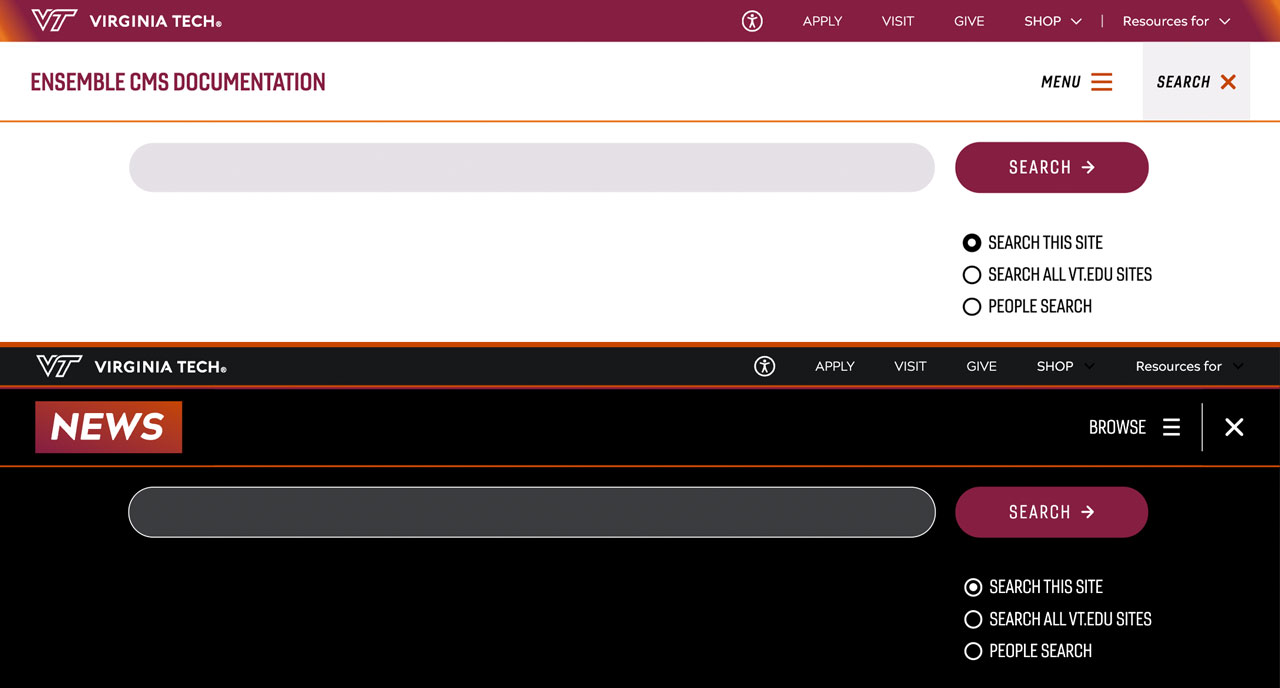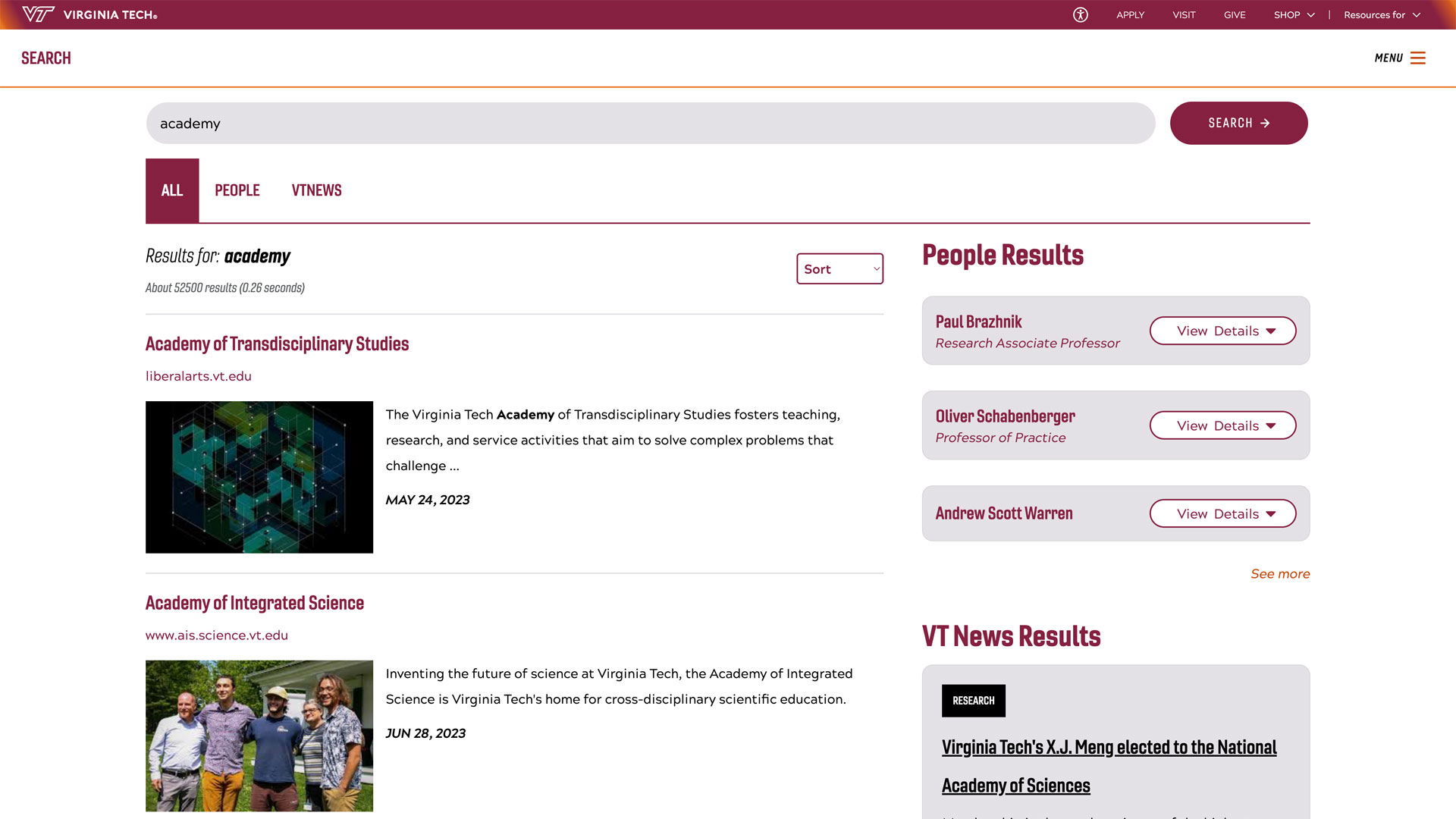Aviation Week's annual 20 Twenties list includes two Hokies
Virginia Tech graduate students Patrick Corrigan and Monica Shanmugam have been recognized as top university talents to watch in the field of aerospace engineering.

Two Virginia Tech aerospace engineering students have been selected as Aviation Week’s 20 Twenties. Master’s degree student Patrick Corrigan and Ph.D. student Monica Shanmugam, along with 18 students from across the globe, were identified as top aerospace-bound individuals from an international field of highly qualified candidates.
This year, there were 90 nominees from 46 different colleges and universities representing 14 countries.
The annual award, sponsored by Aviation Week in collaboration with Accenture, recognizes STEM students on the basis of their academic performance, civic contributions, and research or design projects. The winners will be celebrated at the 20 Twenties Awards Luncheon and Aviation Week Network’s 67th Annual Laureate Awards and Dinner at the National Building Museum in Washington, D.C., in early March.
Corrigan and Shanmugam are respectively the sixth and seventh Virginia Tech students to receive the prestigious honor since the program’s inception in 2013. They join fellow aerospace and ocean engineering graduates James “JP” Stewart in 2016, Samantha Rocker in 2019, Terelle Cadd in 2022, and Eszter Anna Varga and Lucy Waite in 2024.

A 2024 graduate, Corrigan currently serves as a second lieutenant in the United States Air Force while also pursuing his master’s degree under the direction of Professor Craig Woolsey. To support his graduate studies, he earned one of the Air Force's competitive DAWN-ED (Developing the Airmen We Need/Education) fellowships.
Since 2021, he has worked as part of Woolsey’s research group in the Nonlinear Systems Laboratory, gaining expertise in flight dynamic modeling, identification, flight test techniques, and autonomous systems. He also developed an experimental flight test module for Woolsey’s Air Vehicle Dynamics course, a junior level course that, as a sophomore, Corrigan had not yet taken.
Corrigan also spent two summers working at NASA Langley Research Center, developing a reduced-scale electric vertical takeoff and landing aircraft system to support research in the modeling, identification, and control of these highly reconfigurable aircraft.
While at NASA, Corrigan served as first author for a peer-reviewed NASA technical memorandum, detailing his development and flight-testing of a flight vehicle designed to enhance multirotor aerodynamic modeling. He introduced a novel approach to implementing system identification maneuvers that excite motion across the entire flight envelope. The resulting data was compared with wind tunnel results, supporting NASA’s Urban Air Mobility initiative.
At Virginia Tech, Corrigan held various leadership roles within the Virginia Tech Corps of Cadets and Air Force ROTC, balancing a rigorous academic workload with a tightly structured schedule of physical training, team building, and leadership development.
He actively makes service a priority. During his time at NASA, Corrigan spearheaded lessons for the annual Drone Camp organized by the Tuskegee Airmen Inc. The camp strives to inspire at-risk middle school youth to pursue STEM education and professions. Additionally, as the regimental bugler for the Corps of Cadets, he performed Taps at funerals and memorial services.
“Patrick’s drive to advance aerospace technologies goes beyond his academic achievements,” said Woolsey. “He is destined to have a profound influence on the future of defense technologies as he embarks on a career in flight testing with the U.S. Air Force. His exceptional and inspiring academic achievements, leadership, and dedication to advancing the field of aerospace, while working to safeguard our nation, embody the values of the 20 Twenties award.”

Shanmugam previously studied as a master’s degree student under the direction of Professors William Devenport and Todd Lowe, and is now a first year Ph.D. candidate under Lowe and Professor Christopher Roy. Her master’s degree research aimed to improve engineering analysis of high-lift aerodynamics, integrating experiments with computational research, and has set a new standard for the validation of turbulence models.
While completing her master’s degree, Shanmugam participated in a high-profile NASA-funded project. The flow field created by aircraft wings with flaps deployed remains a challenge for even the most advanced computational fluid dynamics (CFD) approaches. For this project, she integrated experiments with computational research and had the challenging task of using a complex laser-Doppler velocimetry instrument to obtain flow data at very near surfaces. Her efforts were crucial in getting critical data for a blind CFD validation study that involved international participants from industry, government labs, and academia.
Shanmugam has further leveraged the validation study data by analyzing the experimental results to obtain new insights on 3D turbulent boundary layer physics. According to Lowe, her work has played a tangible role in advancing predictions of high-lift aerodynamics.
In pursuing her Ph.D, she is conducting pioneering work on developing digital twins that can capture damage done on propulsion engines due to ingested materials and subsequently prescribe actions to improve engine health and performance.
Outside of her research, Shanmugam finds time to serve the campus community and beyond. She is on the leadership board of the Center for Research and Engineering in Aero/Hydrodynamic Technologies (CREATe) student association. The group’s major focus is in providing a supportive and collaborative environment for students and faculty involved in fluid-dynamics research. Shanmugam currently leads the group’s media and outreach efforts. She also serves as the head of media for Women of Aeronautics and Astronautics India.
“Monica is a first generation engineering student who has negotiated a remarkable and difficult path to get to where she is today,” said Devenport. “I am excited to see where she goes in the future, to see how she applies her determination, technical skills, and courage to shape the future of aerospace.“




